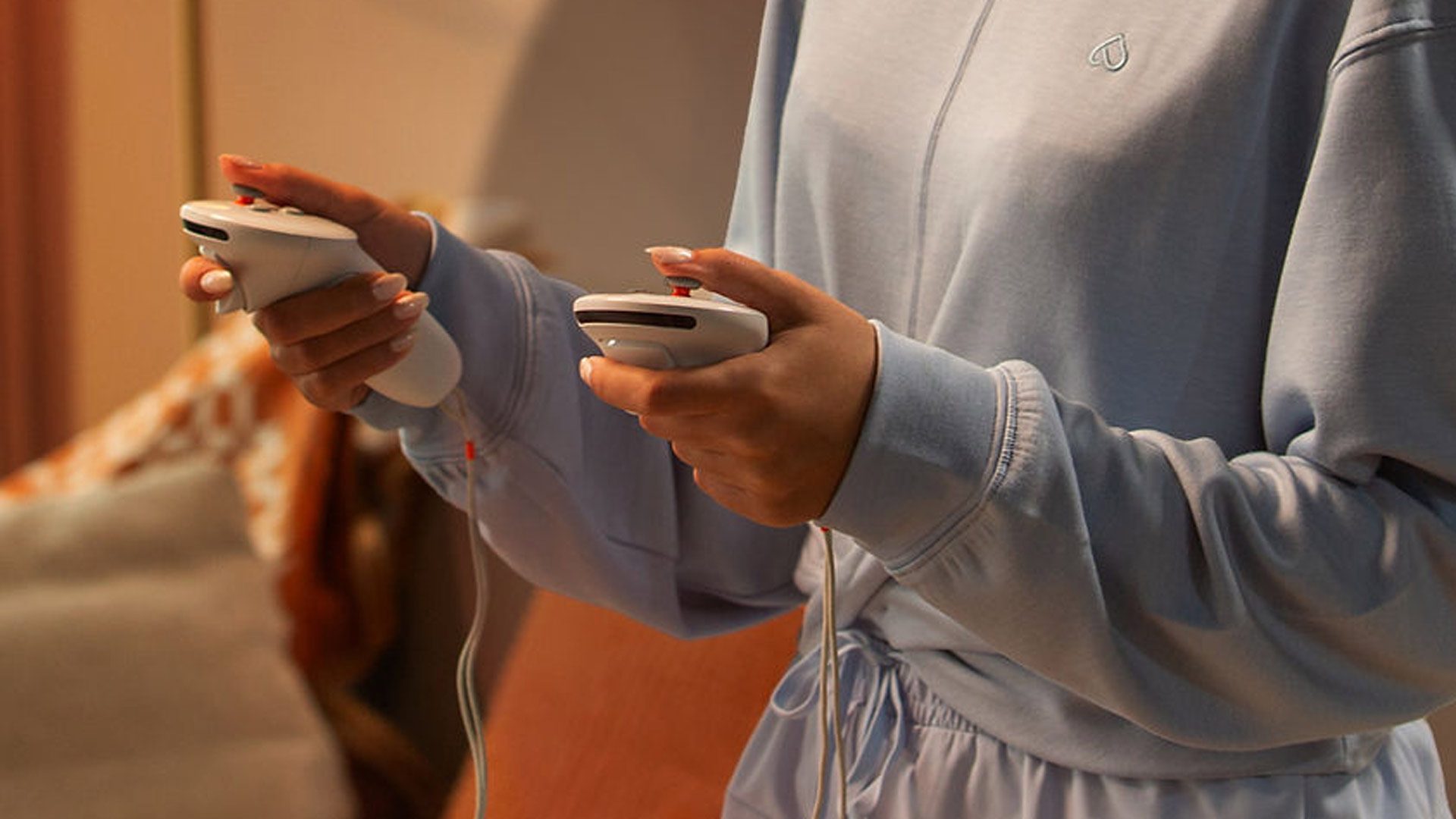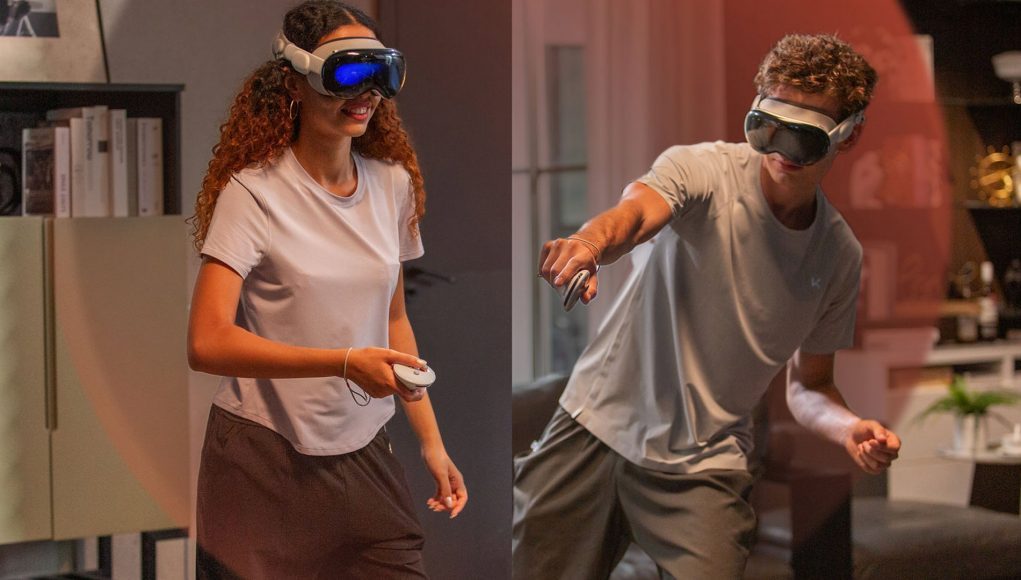Vision Pro doesn’t have controllers, although that’s not stopping third-party hardware creators from trying to beat Apple to the punch. Enter Surreal Touch, a motion controller that’s just launched a Kickstarter campaign, aiming to leverage Vision Pro’s ability to play PC VR games.
Update (August 27th, 2024): The Kickstarter for Surreal Interactive’s controller Surreal Touch for Vision Pro is now live. It’s already broken past its initial $50,000 funding goal, with an estimated ship date in December 2024.
The lowest funding tier, priced at $249, is still available at the time of this writing. The campaign maintains that this represents a 30% savings off its MRSP of $369. All funding tiers feature a single set of controllers, however mix and match Steam keys for Contractors Showdown (2024) and/or Grimlord (2023).
Check out the product trailer below to see some of the main features in action:
Original Article (July 3rd, 2024): Surreal Interactive, the startup behind Surreal Touch, is hoping to bring the controllers to market some point next month (see update), with its price revealed at the time of launch.
Similar to Meta’s Touch Pro controllers, Surreal Touch contains optical sensors with fisheye lenses that allow the device to track independently from the headset.

Also very similar to Meta’s Touch Pro, you’ll find a ring-less design thanks to its inside-out optical sensors, onboard SLAM tracking allowing for 6DOF input, and a standard button configuration that anyone with a modern VR headset will instantly recognize.
Speaking to CEO and founder Zhenfei Yang, Road to VR learned that Surreal Touch will ship with a SteamVR compatibility mode, which supports all existing PC VR games. That means you’ll need a VR-ready PC to play games like Half-Life: Alyx (2020), which the company shows working below:
And just how will that work? Surreal Interactive says it’s currently developing a Vision Pro-native streaming app, which promises to let you play SteamVR games from your computer at “4K, 120 Hz.”
While PC VR gameplay is undoubtedly a big focus, the company says it’s also working on its own native SDK, which will allow Vision Pro app developers the ability to support Surreal Touch.
“We’re currently collaborating with several studios to port their games to the AVP platform. Additionally, we have plans to reach out to and partner with more developers in the near future,” Yang told Road to VR.
Surreal Interactive also teased it’s working on a ‘Tool Mode’, which presumably could also allow for basic UI selection when in Vision Pro, however the company hasn’t revealed its exact function, stating only that the additional mode is “still undergoing in-house development. Stay tuned for more details.”
There’s still plenty to learn about, including battery life, real-world tracking accuracy, compatibility with other headsets, price, and more. We’re hoping to learn more closer to launch, so check back soon. In the meantime, check out the spec sheet below:
Specs
| Tracking |
Positioning Accuracy: Less than 10mm, Less than 1 degree
|
|
Refresh Rate: 100Hz
|
|
|
Computer Vision and SLAM Technology, dual fisheye camera
|
|
| Design | Length: 125mm |
| Width: 71mm | |
| Height: 77mm | |
| Weight: 148g | |
|
Compact, ring-free design
|
|
| Streaming App |
Vision Pro Native
|
|
Graphics: 4K resolution at 120Hz
|
|
|
Software Optimization: Stream 4K 120Hz SteamVR Graphics to Your Headset, unmatched by others
|







